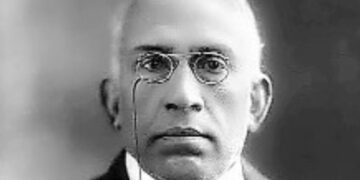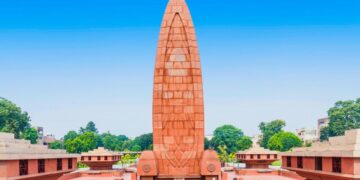1. Today marks the consecration ceremony of Shri Ramlala in the sacred city of Ayodhya, evoking widespread enthusiasm not only in Bharat but across the globe. Ayodhya, described in Bharatiya Vedas and scriptures, holds profound significance. The journey leading to the majestic temple standing before us today spans 500 years of unwavering devotion by Ram devotees. This saga began in 1528, amid Babar’s capture of Delhi and the establishment of the Mughal Empire in the country. Historically, it is noted that Babar’s commander, Mir Baqi, acting on Babar’s orders, dismantled the Lord Shri Ram temple in Ayodhya, erecting a disputed structure in its place. Post-independence, the Shri Ram Mandir movement gained momentum, culminating in Hindus securing permission for worship in 1986. October 30, 1990, marked a pivotal moment when bullets were fired on Kar Sevaks. Ultimately, on November 9, 2019, a five-judge bench of the Supreme Court rendered its verdict in favor of Shri Ram Janmabhoomi.
*Today is Shri Ramlala’s Life Consecration Ceremony
*Temple Built After 500 Years of Struggle
*From 1528 to 2024, Story of Ram Temple
2. On 22 January 1892, Thakur Roshan Singh was born. He was one of the revolutionaries who fought for Bharat’s independence. He played an active role in the non-cooperation movement. In February 1922, when the police lathi-charged the protest going on during the freedom movement in the Town Hall of Bareilly, Roshan Singh clashed with the policemen present there. Moreover, On 9 August 1925, the government treasury was looted under the ‘Kakori Train Action’ near ‘Kakori‘ station near Lucknow, the capital of Uttar Pradesh. Although Thakur Roshan Singh did not directly participate in the ‘Kakori Train Action’, seeing his charming and flamboyant personality, he was also sentenced to death along with the dacoit masters Ramprasad Bismil, Ashfaq Ulla Khan, and Rajendranath Lahiri.
*Tributes to Roshan Singh on his Birth Anniversary
*Sacrificed his Life in Kakori Train Action
*Played active role in Non-Cooperation Movement
3. On this day in 1968, Apollo 5 flew into space with the Saturn IB rocket taking off from LC-37B just before sunset. As it turned out, the next launch from this pad, rebuilt for a new fleet of rockets, would not occur for nearly 35 years. Ten minutes later, the spacecraft achieved orbit. Apollo 5 (launched January 22, 1968), also known as AS-204, was the uncrewed first flight of the Apollo Lunar Module (LM) that would later carry astronauts to the surface of the Moon. Once the craft reached orbit and the LM separated from the S-IVB booster, the program of orbital testing began, but a planned burn was aborted automatically when the Apollo Guidance Computer detected the craft was not going as fast as planned.
*Apollo-5 was launched on 22 January 1968
*This was Lunar Module’s First Uncrewed Flight
*Gene Kranz was the flight director of Apollo 5
















Comments